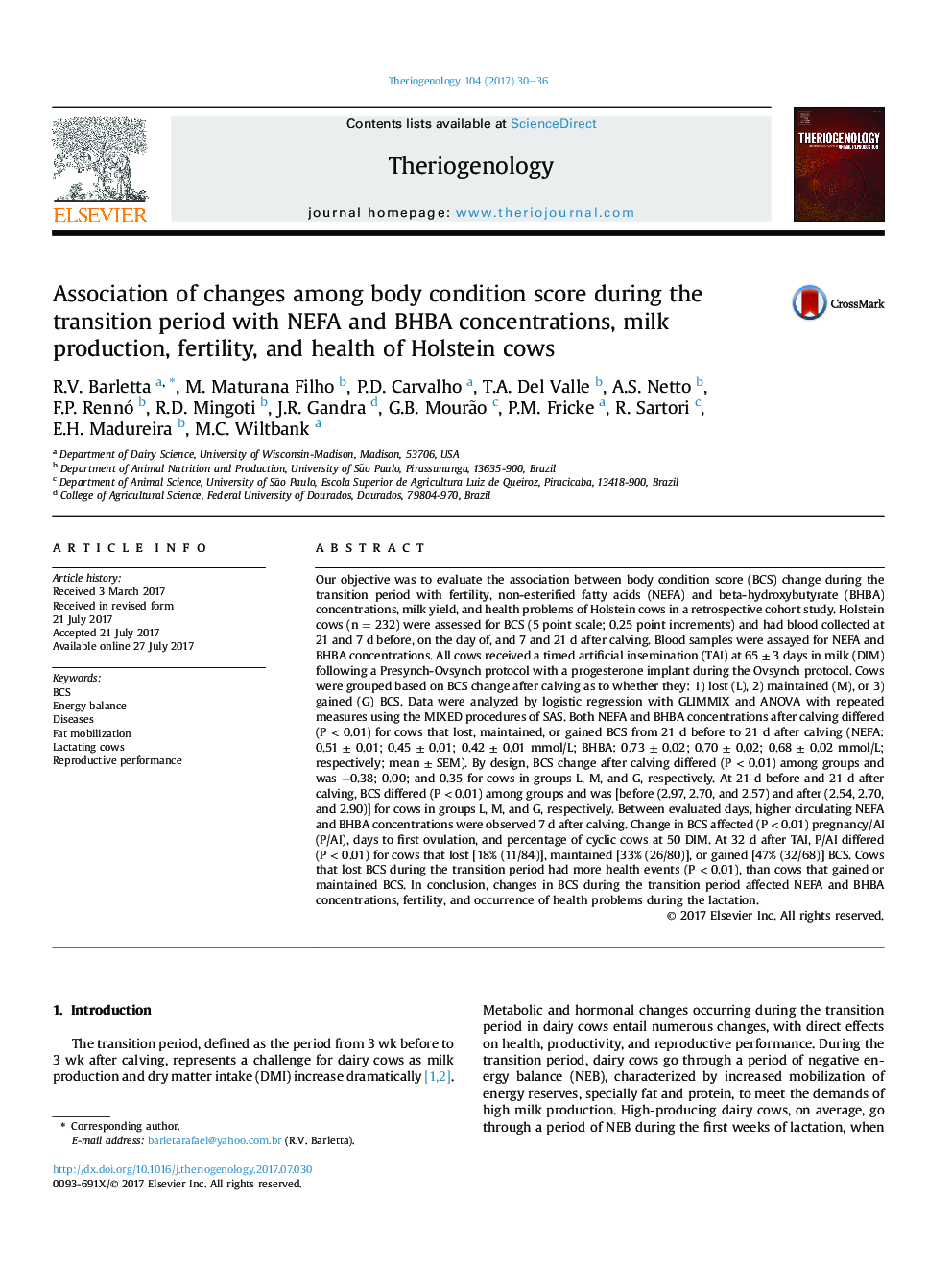| کد مقاله | کد نشریه | سال انتشار | مقاله انگلیسی | نسخه تمام متن |
|---|---|---|---|---|
| 5522983 | 1546065 | 2017 | 7 صفحه PDF | دانلود رایگان |

- Changes in body condition score during peripartum affect cows health and fertility.
- During transition period, BCS change had no effect on dairy cows performance.
- Cows that lost BCS had higher incidence of diseases during lactation.
- Higher BCS loss during dry period increase NEFA and BHBA concentrations.
- Higher circulating NEFA and BHBA concentrations delay first postpartum ovulation.
Our objective was to evaluate the association between body condition score (BCS) change during the transition period with fertility, non-esterified fatty acids (NEFA) and beta-hydroxybutyrate (BHBA) concentrations, milk yield, and health problems of Holstein cows in a retrospective cohort study. Holstein cows (n = 232) were assessed for BCS (5 point scale; 0.25 point increments) and had blood collected at 21 and 7 d before, on the day of, and 7 and 21 d after calving. Blood samples were assayed for NEFA and BHBA concentrations. All cows received a timed artificial insemination (TAI) at 65 ± 3 days in milk (DIM) following a Presynch-Ovsynch protocol with a progesterone implant during the Ovsynch protocol. Cows were grouped based on BCS change after calving as to whether they: 1) lost (L), 2) maintained (M), or 3) gained (G) BCS. Data were analyzed by logistic regression with GLIMMIX and ANOVA with repeated measures using the MIXED procedures of SAS. Both NEFA and BHBA concentrations after calving differed (P < 0.01) for cows that lost, maintained, or gained BCS from 21 d before to 21 d after calving (NEFA: 0.51 ± 0.01; 0.45 ± 0.01; 0.42 ± 0.01 mmol/L; BHBA: 0.73 ± 0.02; 0.70 ± 0.02; 0.68 ± 0.02 mmol/L; respectively; mean ± SEM). By design, BCS change after calving differed (P < 0.01) among groups and was â0.38; 0.00; and 0.35 for cows in groups L, M, and G, respectively. At 21 d before and 21 d after calving, BCS differed (P < 0.01) among groups and was [before (2.97, 2.70, and 2.57) and after (2.54, 2.70, and 2.90)] for cows in groups L, M, and G, respectively. Between evaluated days, higher circulating NEFA and BHBA concentrations were observed 7 d after calving. Change in BCS affected (P < 0.01) pregnancy/AI (P/AI), days to first ovulation, and percentage of cyclic cows at 50 DIM. At 32 d after TAI, P/AI differed (P < 0.01) for cows that lost [18% (11/84)], maintained [33% (26/80)], or gained [47% (32/68)] BCS. Cows that lost BCS during the transition period had more health events (P < 0.01), than cows that gained or maintained BCS. In conclusion, changes in BCS during the transition period affected NEFA and BHBA concentrations, fertility, and occurrence of health problems during the lactation.
Journal: Theriogenology - Volume 104, December 2017, Pages 30-36